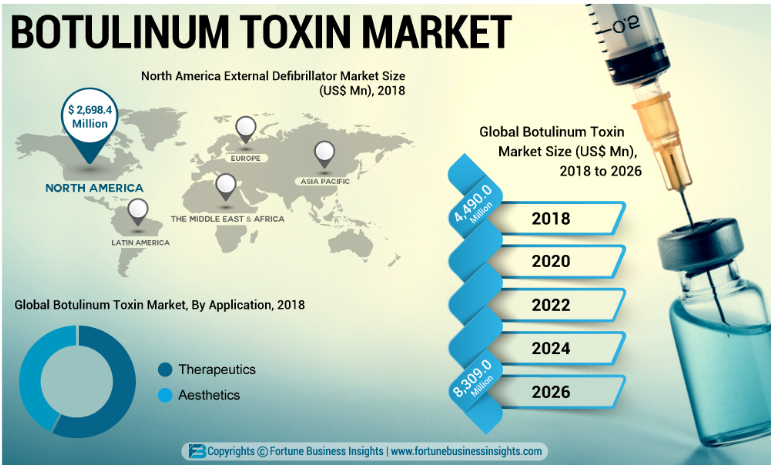Clostridium botulinum is a gram-positive, rod-shaped spore-forming organism that grows in an anaerobic environment. The main feature of this bacteria mostly found in soil is the production of botulinum neurotoxin, which is fatal to the body. Exposure to this toxin causes botulism, which shows symptoms of various paralysis and, in severe cases even to death. It was first recognized and isolated in 1895 by Emile van Ermengem from home-cured ham1. The name botulinum is also known to originate from the Latin word “botulus”, meaning sausage. At that time, it was classified as the genus Bacillus, but was later reclassified into Clostridium by Ida A. Bengtson, resulted in the species name as Clostridium botulinum2.
C. botulinum strains are classified into the toxinotypes A to G based on the serological characteristics of the toxins they produce. Interestingly, C. botulinum is divided into four distinguished phenotypic groups (I to IV). In general, Groups I and II cause botulism in humans, Group III in animals, and Group IV is not generally associated with illness. C. botulinum of group IV was later renamed as Clostridium argentinense 3. Of the strains infecting humans, Group I produces toxins A, B, and F, and Group II produces toxins B, E, and F. It has also been reported the strains producing both types of toxins. However, only the strains of each type are expressed, not both at the same time. Strain C. butyricum and C. baratii are also known to produce toxins E and F, respectively.
Botulinum neurotoxins can enter the body through mucosal or gastrointestinal tracts, such as the eyes or respiratory tracts. After entering the body, the neurotoxin is absorbed into the bloodstream and lymph circulatory system. These are then transmitted to the motor nerve terminals which prevents the transmission of neurotransmitters and the signals to the muscles. The typical clinical symptoms of botulism include diplopia, pupil dilation, slurred speech, dry mouth, facial paralysis and more. Limb paralysis and respiratory disorders become apparent as the disease progresses. Respiratory muscle paralysis can lead to death4.
Human botulism can be classified into foodborne, wound, inhalation, and infant botulism. The most typical botulism toxin observed worldwide is the foodborne due to the consumption of poorly preserved foods that have been contaminated with botulinum toxin. In terms of the wound botulism which rarely occurs, and it is caused when C. botulinum reproduces in an anaerobic condition after its spores enter through wounds. This form of the disease is also associated with substance abuse. Inhalation botulism is also very rare. It may be absorbed into the respiratory system if botulism is sprayed in the form of an aerosol as bioterrorism activities. Most infant botulism is observed in infants younger than 6 months of age. In this case, the spores germinate into bacteria and release toxins from the intestine instead of taking the pre-formed toxins, and causes the condition. However, this is not the case in adults and children, because natural defenses in the gut interfere with germination and growth. It is generally known that babies should not be fed honey because they are at risk of the infants-botulism through honey contaminated with spores of C. botulinum4,5.
Interestingly, botulinum neurotoxin, one of the most lethal poisons to humans, is isolated from C. botulinum and used for treatment. Botulinum toxin is injected into the muscles to suppress the release of neurotransmitters (acetylcholine) which relieve the excessive contraction of the muscle. The products are sold for therapeutic and cosmetic purposes. The usage of botulinum toxin is divided into 60% for treatment and 40% for cosmetic purposes6. According to the “2018 Statistical Report” released by the American Society of Plastic Surgeons in 2019, the cosmetic demands of using botulinum toxin among the minimally-invasive procedures are increasing that the treatment with botulinum toxin takes the top spot7.

Two types of botulinum (type A and B) are sold as medicine. Amongst them, a treatment using Type A was released first. In 1977, Alan B. Scott initially treated strabismus patients with botulinum toxin type A and published the results in 19808. He founded a company, Oculinum, to manufacture and sell toxins but the issues with the product liability insurance made the distribution difficult. The company eventually merged with Allergan in 1989 and changed its brand name to Botox. In 1991, the medication was first approved by the US FDA for the usage in patients over 12 years of age with crossed eyes and eye twitching.
There are 4 items by 3 companies in the USA, 5 items by 3 companies in the UK, and 19 items by 7 companies in South Korea that are approved by the US FDA. Botox from Allergan is the product with the highest global market. Botox has been approved in the United States for 14 diseases, including treatments of eye twitching, crossed eyes, chronic migraine, cystitis and more.
Although C. botulinum was first discovered as a harmful strain that causes food poisonings, through the study of botulinum neurotoxin it is now a microorganism that plays a very important role in modern medicine.
References
- 1.Ermengem E. Ueber einen neuen anaëroben Bacillus und seine Beziehungen zum Botulismus. Zeitschr f Hygiene. February 1897:1-56. doi:10.1007/bf02220526
- 3.SUEN JC, HATHEWAY CL, STEIGERWALT AG, BRENNER DJ. Clostridium argentinense sp. nov.: A Genetically Homogeneous Group Composed of All Strains of Clostridium botulinum Toxin Type G and Some Nontoxigenic Strains Previously Identified as Clostridium subterminale or Clostridium hastiforme. International Journal of Systematic Bacteriology. October 1988:375-381. doi:10.1099/00207713-38-4-375
- 4.Lindstrom M, Korkeala H. Laboratory Diagnostics of Botulism. Clinical Microbiology Reviews. April 2006:298-314. doi:10.1128/cmr.19.2.298-314.2006
- 5.Botulism. World Health Organization. https://www.who.int/news-room/fact-sheets/detail/botulism. Published January 10, 2018.
- 6.Botulinum Toxin Market a $8,309.0 Million Industry…! What is Driving the market? Medgadget. https://www.medgadget.com/2020/01/botulinum-toxin-market-a-8309-0-million-industry-what-is-driving-the-market.html. Published January 22, 2020.
- 7.New Plastic Surgery Statistics Reveal Trends Toward Body Enhancement. American Society of Plastic Surgeons. https://www.plasticsurgery.org/news/press-releases/new-plastic-surgery-statistics-reveal-trends-toward-body-enhancement. Published March 11, 2019.
- 8.Scott AB. Botulinum Toxin Injection into Extraocular Muscles as an Alternative to Strabismus Surgery. Ophthalmology. October 1980:1044-1049. doi:10.1016/s0161-6420(80)35127-0

